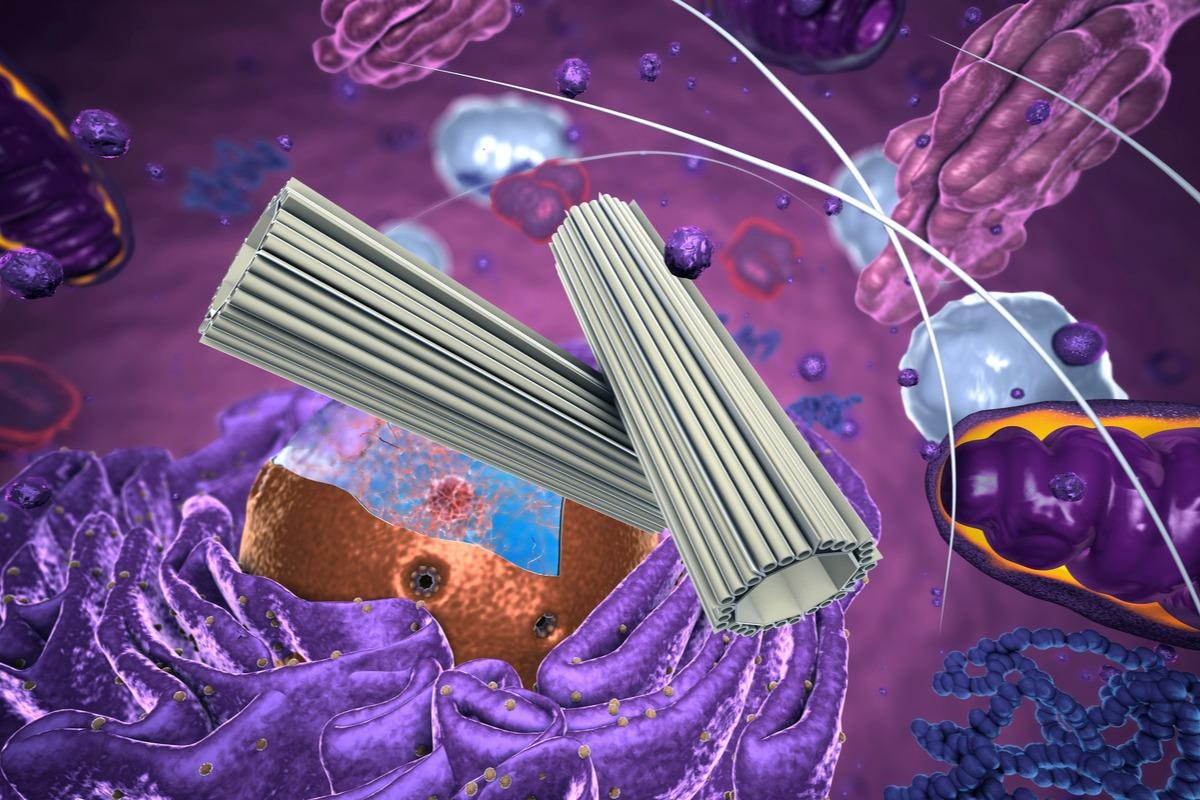Reviewed by Danielle Ellis, B.Sc.Jun 17 2022
The centrosome is the organelle that organizes the cytoskeleton during cell division, which is an important role in species ranging from yeast to humans. Due to its broad functions, scientists previously considered that the centrosome was quite similar in all cells. Magdalena Götz and their research colleagues, on the other hand, looked at this idea in neurons and their embryonic progenitors, which are called neuronal stem cells.

Image Credit: Christoph Burgstedt/Shutterstock
There is so much we don’t yet know about these cells, including how the centrosomes of neurons compare to those of neural stem cells and other cell types.”
Magdalena Götz, Professor and Director, Institute of Stem Cell Research, Helmholtz Center Munich
Their later discoveries have placed serious doubt on the idea that all centrosomes are made equal.
Centrosomes are in fact not “one type fits all”
The researchers discovered that the content of proteins in centrosomes varies dramatically depending on the cell type, thanks to close collaboration with the Helmholtz Munich Proteomic Core Facility led by Stefanie Hauck.
We were surprised not only by the unexpected high degree of heterogeneity of the centrosomes, but also by the discovery of many unexpected proteins associated with them – for example, RNA-binding proteins and even proteins responsible for splicing (the processing of RNA), which normally takes place in the nucleus.”
Magdalena Götz, Professor and Director, Institute of Stem Cell Research, Helmholtz Center Munich
The location of centrosome-associated proteins is crucial for disease
The researchers revealed that in neural stem cells, but not in neurons, a particular protein (the widely expressed splicing protein PRPF6) is concentrated near the centrosome. In animal studies, a mutation of the protein identified in individuals with the brain malformation periventricular heterotopia causes a similar phenotype.
This means that the location of a protein is crucial for a disease. With our centrosome analysis, we now have an important resource to test further associations with neuronal diseases. In particular, our research can explain for the first time why a protein that is present in all cells, after mutation, causes a phenotype only in the brain, but not in other organs. This will allow further insights into disease mechanisms—and thus get one step closer to their treatment.”
Magdalena Götz, Professor and Director, Institute of Stem Cell Research, Helmholtz Center Munich
Source:
Journal reference:
O’Neill, A. C., et al. (2022) Spatial centrosome proteome of human neural cells uncovers disease-relevant heterogeneity. Science. doi.org/10.1126/science.abf9088.